Convert QIF to QBO and import into QuickBooks Desktop or Quickbooks Online
Need to import bank or credit card transactions in a QIF file into QuickBooks 2021-2024 or Quickbooks Online, but cannot seem to make it work? The problem is that your bank only provides transactions in a format that QuickBooks cannot read.
The Solution: try ProperConvert (QIF2QBO) app. It can convert your transactions from QIF to QBO format that QuickBooks can import.
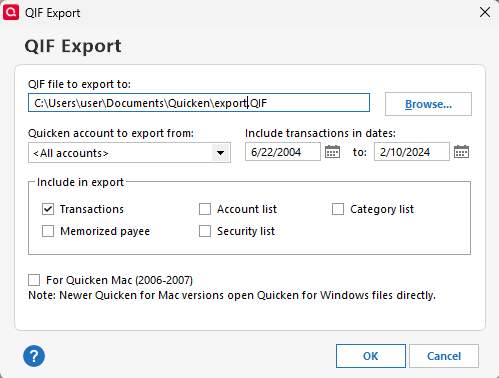
Convert transaction QIF files to QBO format
- ProperConvert (QIF2QBO) extracts transactions from QIF files. It creates QBO files ready to import into QuickBooks.
- No data entry: convert data you already have in bank or credit card transactions file format to the QBO format
- Smart: ProperConvert (QIF2QBO) understands many layouts. It finds columns like date, amount, description, etc. of your transactions.
- Easy to use: Converting your banking transactions into QBO files could not be any easier. In a few clicks, you will have all your transactions converted to importable by QuickBooks 2021-2024 format in no time at all.
- Free trial and support: try it for Free before you buy and receive full support before and after you order.
- Safe to use: ProperConvert (QIF2QBO) converts all your banking transactions on your computer.

Convert QIF files to QBO format (QIF2QBO)
This tutorial shows how to convert a QIF file from your bank or credit card statement to QBO (Web Connect) and import into Quickbooks.
Use the ProperConvert app to convert QIF to QBO. Other formats are supported as well.
Step by step instructions for Windows
Follow the steps below for the Windows version, followed by the Mac version.
Make sure you are using the latest version of QIF2QBO. Download it from the QIF2QBO download page. Start QIF2QBO and select a QIF file.
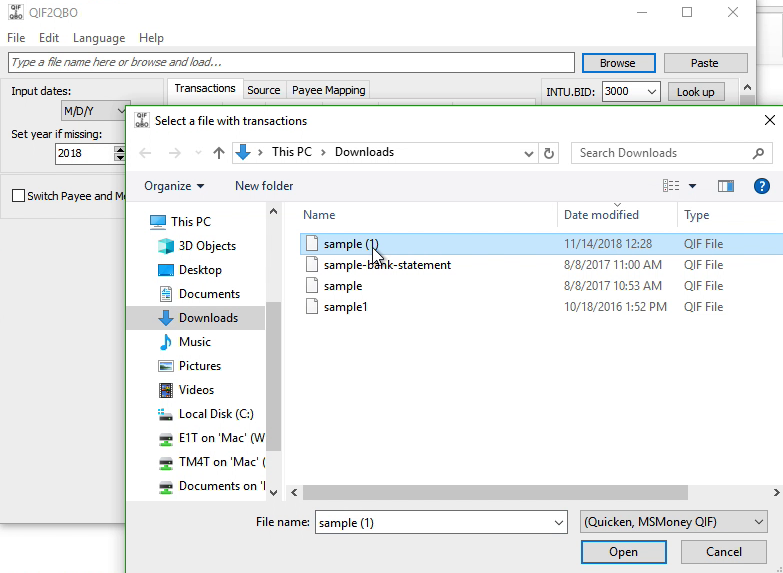
Review transactions before converting, check that dates are correct, have the correct year, deposits, and withdrawals are assigned correctly.

Set INTU.BID number to match your bank or use a default value. The INTU.BID value defines the bank label shown during a QBO import in Quickbooks. You can try to locate your bank. Make sure a bank you choose, supports the Account Type you are converting for. Keep the default value if your bank is not listed (3000-Wells Fargo or any allowed bank).
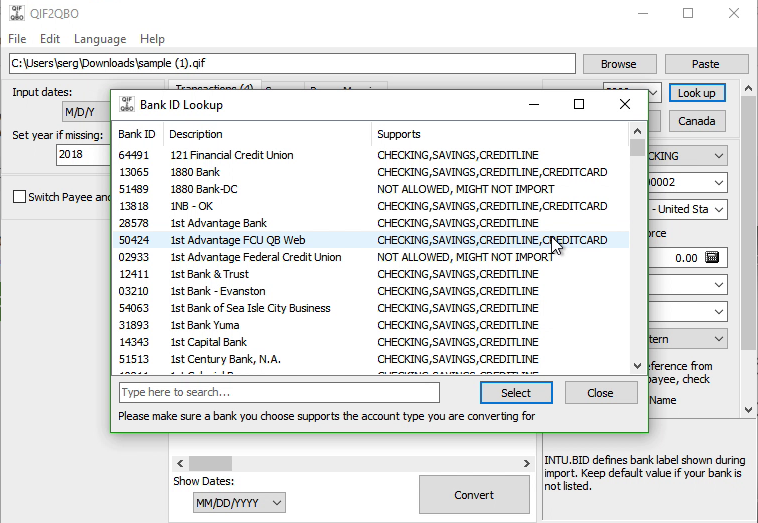
Set the Account ID (number) and the Account Type. Account ID must be all digits for Quickbooks. For multiple accounts, use a different Account ID for each account.
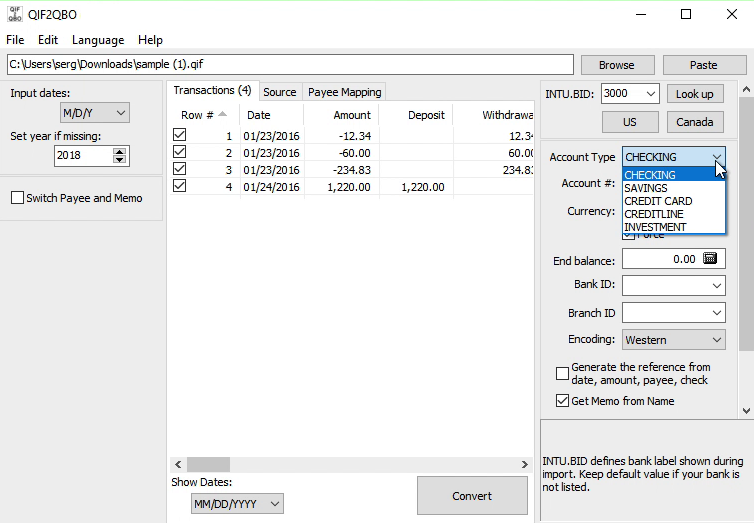
Currency should be USD even for non-USD accounts for Quickbooks US edition. For the Canadian edition, you can use USD and CAD. And for the UK edition, GBP currency must be set. You can also set End balance, Bank ID, Branch ID if your accounting software requires it.
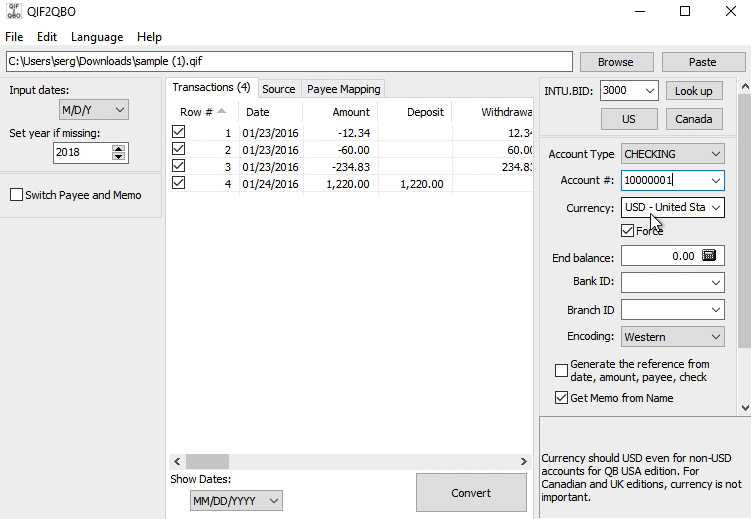
Click the 'Convert' button to create a QBO file.

Confirm the file name and location.
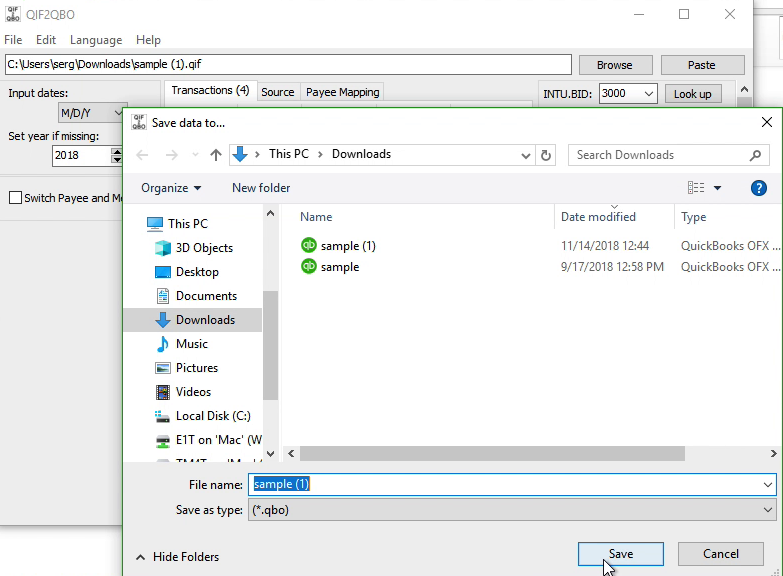
Import created QBO file into Quickbooks
Now the QBO file is created, let's switch to Quickbooks and import created QBO file. Before importing a QBO file make sure that the account you need to import into doesn’t have the yellow strike icon. Click 'Lists' - 'Charts of Accounts'.

Because if you have the icon, it means the account is online linked to direct download. You need to disconnect first to import a QBO file.

To disconnect, right-click - 'Edit Account'.

Then click on 'Bank Feed Settings' and 'Deactivate All Online Services' first if needed. Check there is no yellow icon after the change. After disconnecting the account from online services, you can import a QBO file.
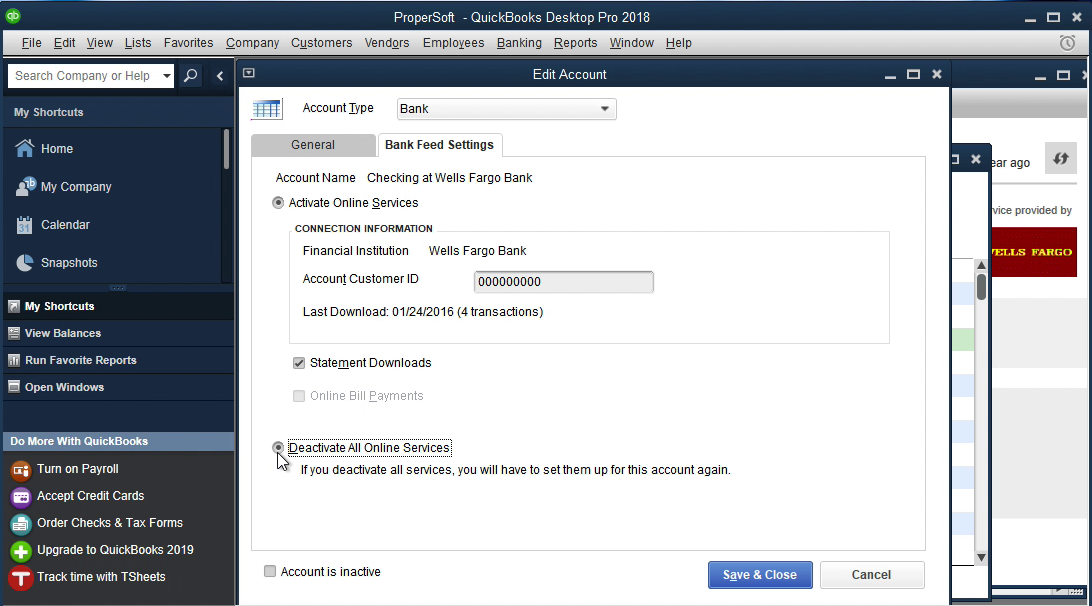
To import a QBO file, select 'File' - 'Utilities' - 'Import' - 'Web Connect Files', select created QBO file.
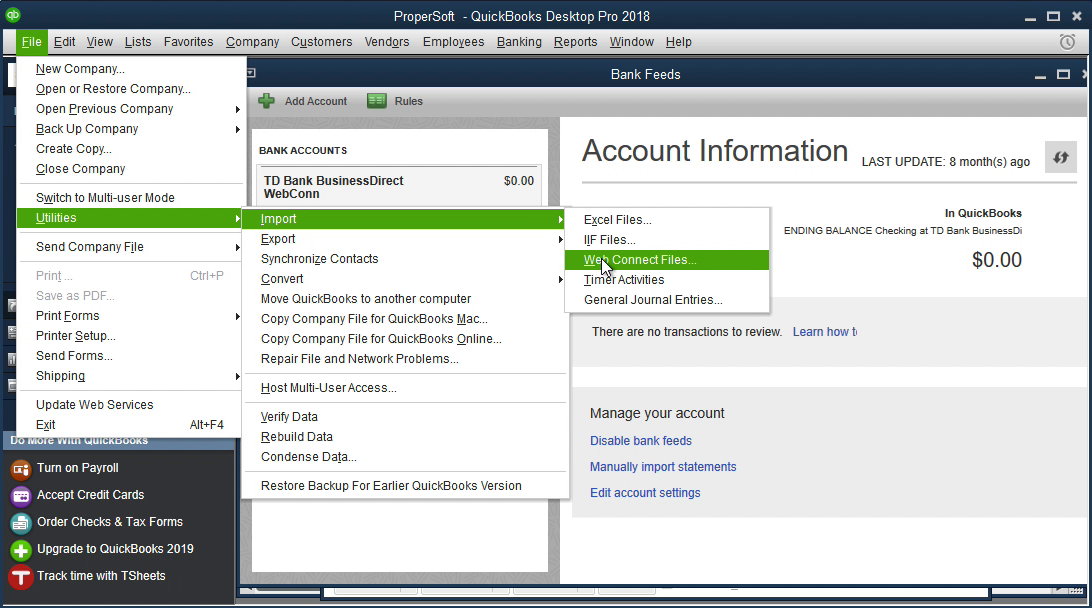
And select an existing account to import transactions. Check bank label, Account Type, Account number to select the correct Account in Quickbooks. Then click the 'Continue' button.
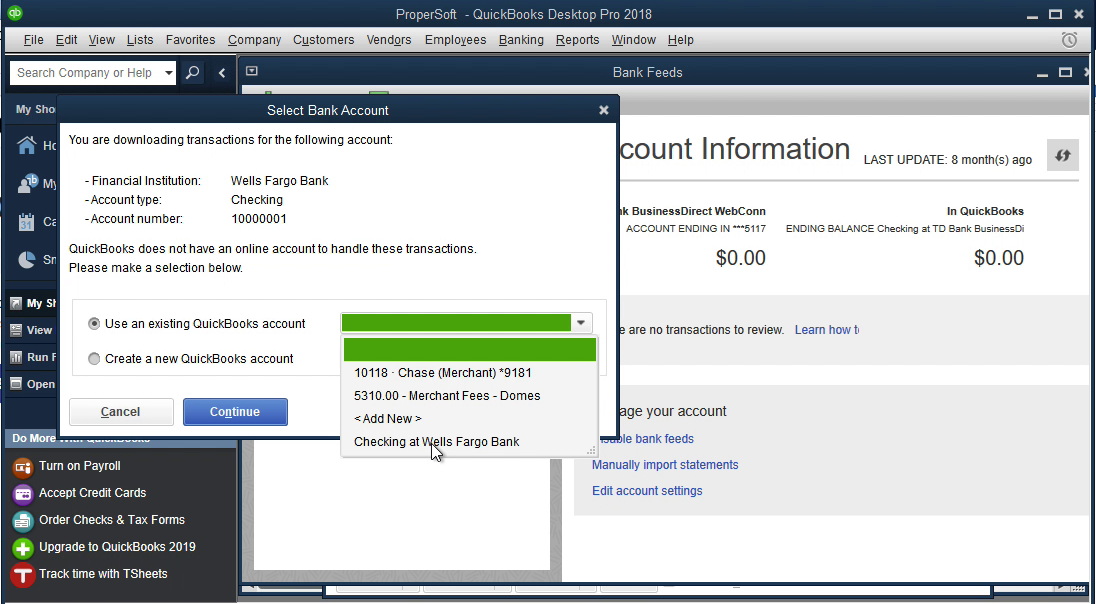
Now your data is imported.

Click on 'Transaction List' to review transactions. Assign Vendor Records and expense/income accounts before adding transactions to the register.

And the 'Payee' column is empty. It shows Vendor Records. When you choose a Vendor Record, for the Payee from the QBO file, QuickBooks will remember your choice for the next QBO import.
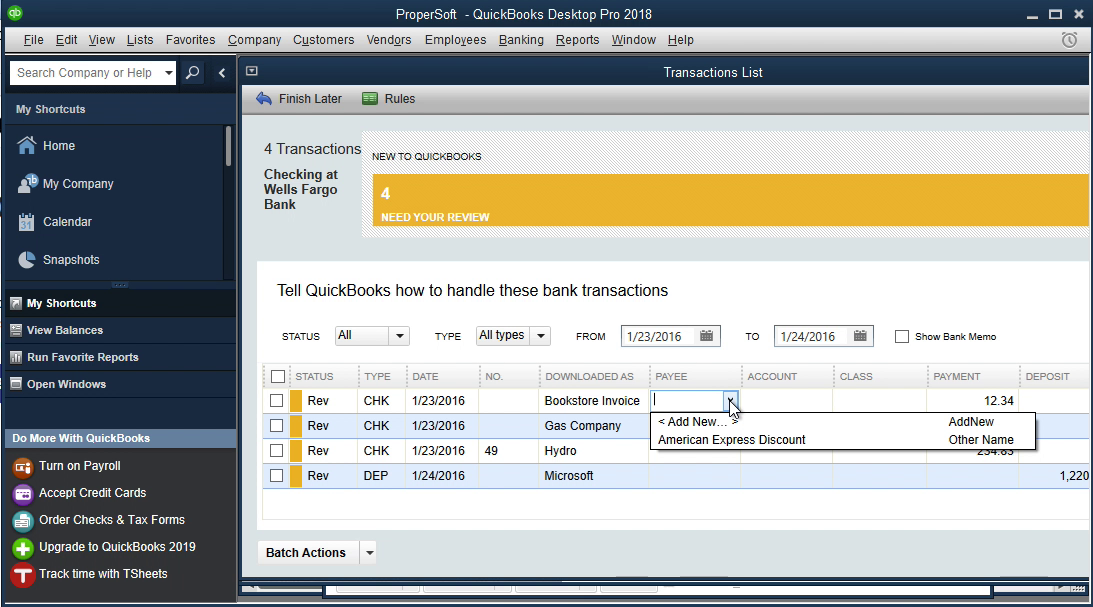
Once Vendor Records and Account are set, you can add matched transactions to the register.
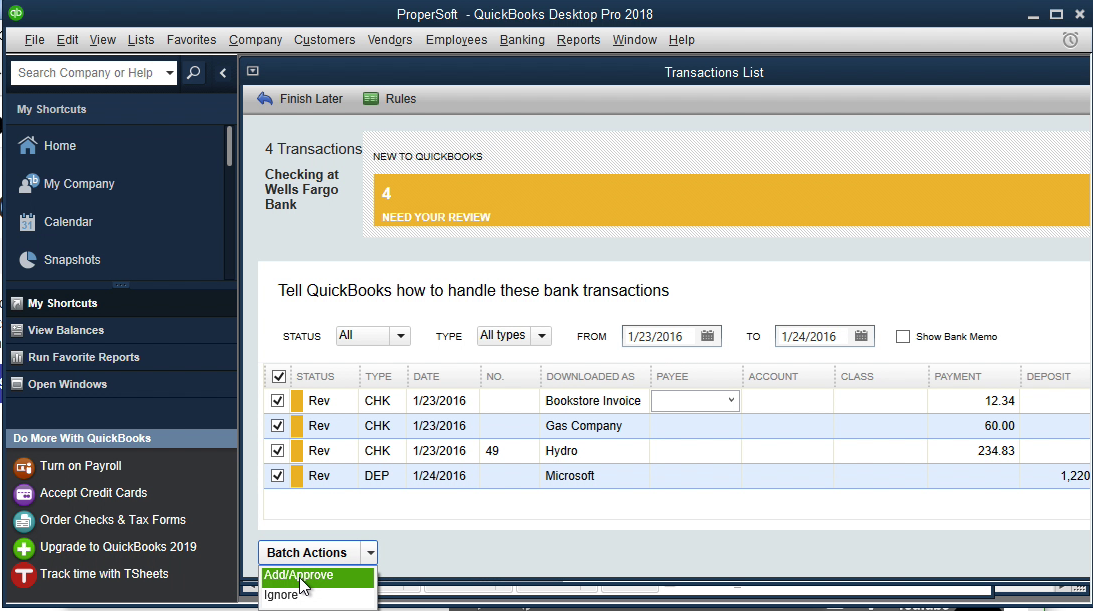
See this Windows tutorial as a video:
Step by step instructions for macOS
Make sure you are using the latest version of QIF2QBO. Download it from the QIF2QBO download page.
Start QIF2QBO and select a QIF file.
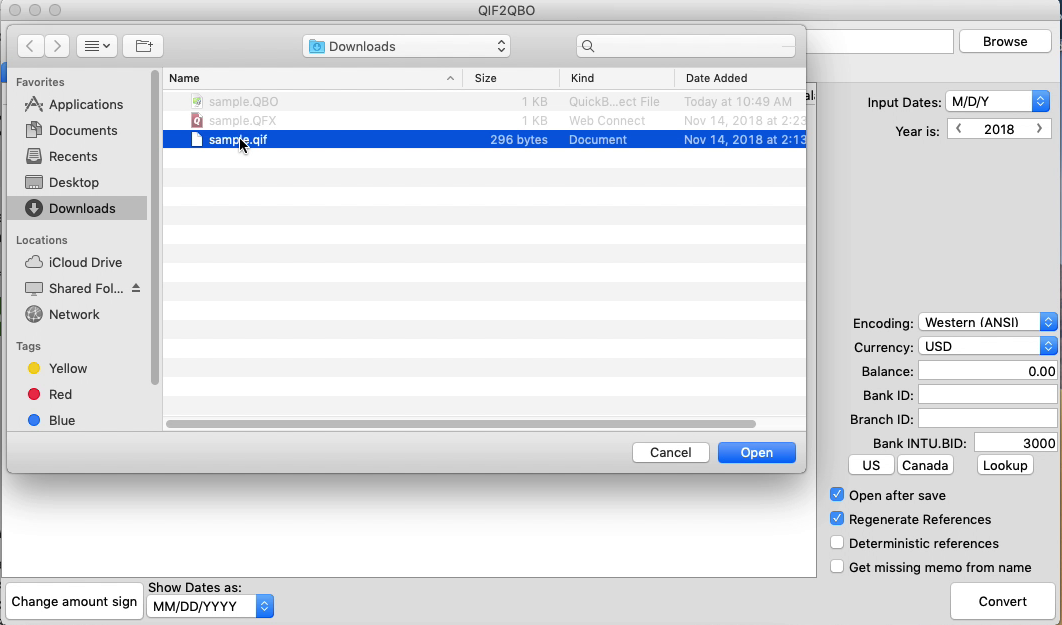
Review transactions before converting, check that dates are correct, have the correct year, deposits and withdrawals are assigned correctly.
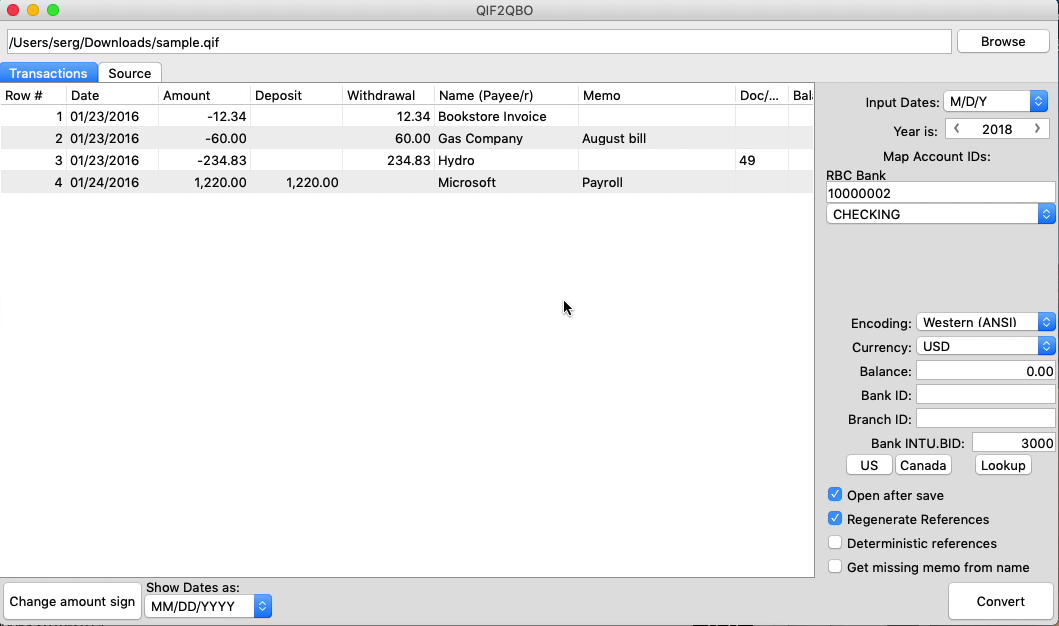
Set INTU.BID number to match your bank or use the default value. The INTU.BID value defines the bank label shown during a QBO import in Quickbooks. You can try to locate your bank. Make sure a bank you choose, supports the Account Type you are converting for. Keep the default value if your bank is not listed (3000-Wells Fargo or any allowed bank).
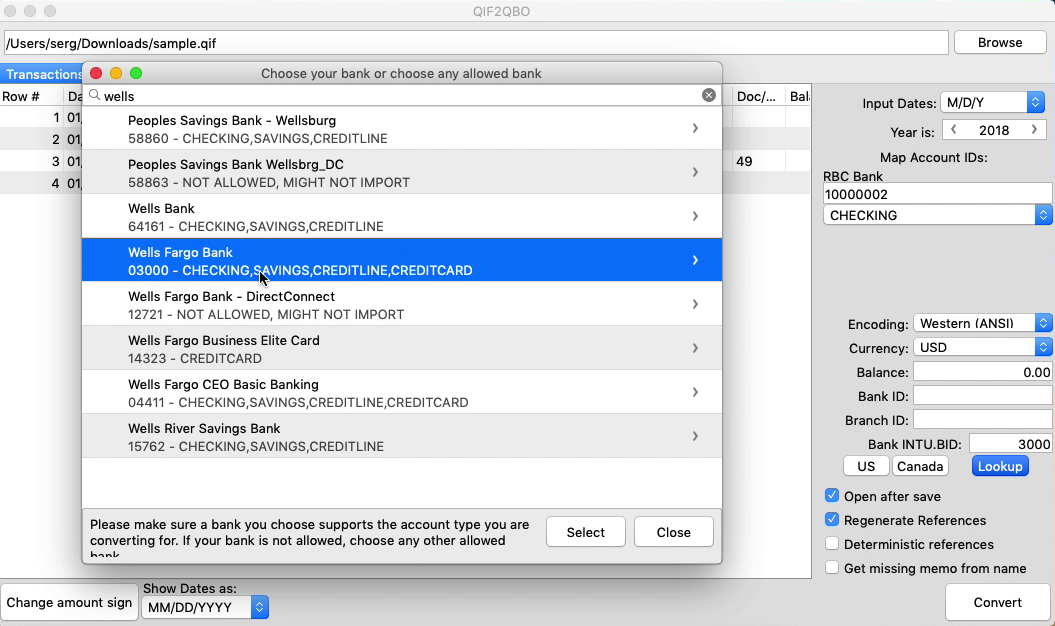
Make sure to set the Account ID (number) and the Account Type. Account ID must be all digits for Quickbooks. For multiple accounts, use a different Account ID for each account.
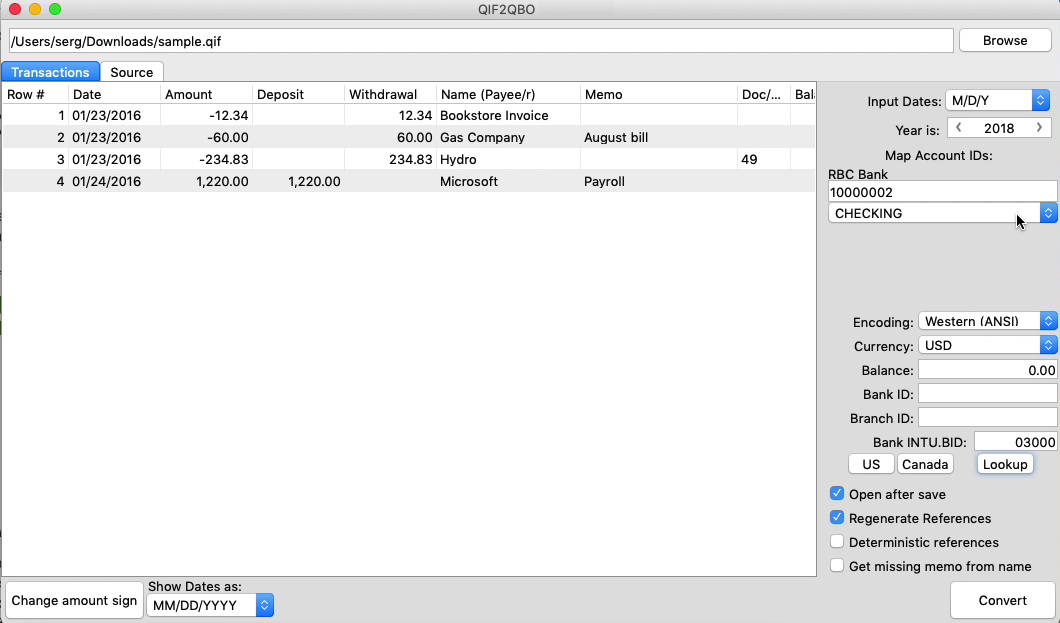
Currency should be USD even for non-USD accounts for Quickbooks US edition. For the Canadian edition, you can use USD and CAD. And for the UK edition, GBP currency must be set. You can also set Balance, Bank ID, Branch ID if your accounting software requires it.

Click the 'Convert' button to create a QBO file.
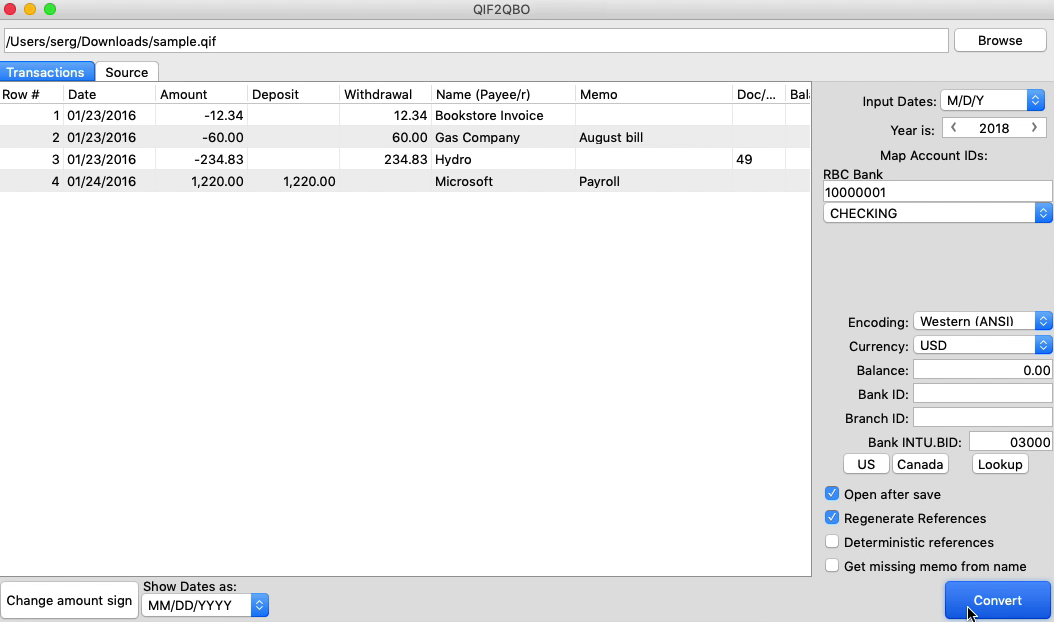
Confirm the file name and location.
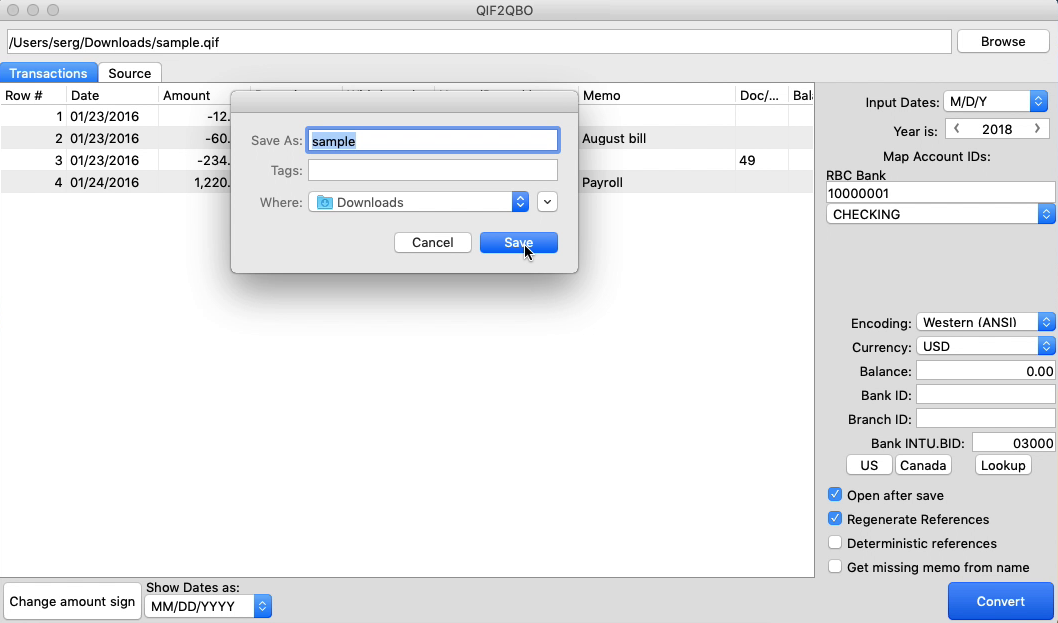
Import created QBO file into Quickbooks
Now the QBO file is created, let's switch to Quickbooks and import created QBO file. Before importing a QBO file make sure to backup your data. Click 'File' - 'Back Up'.
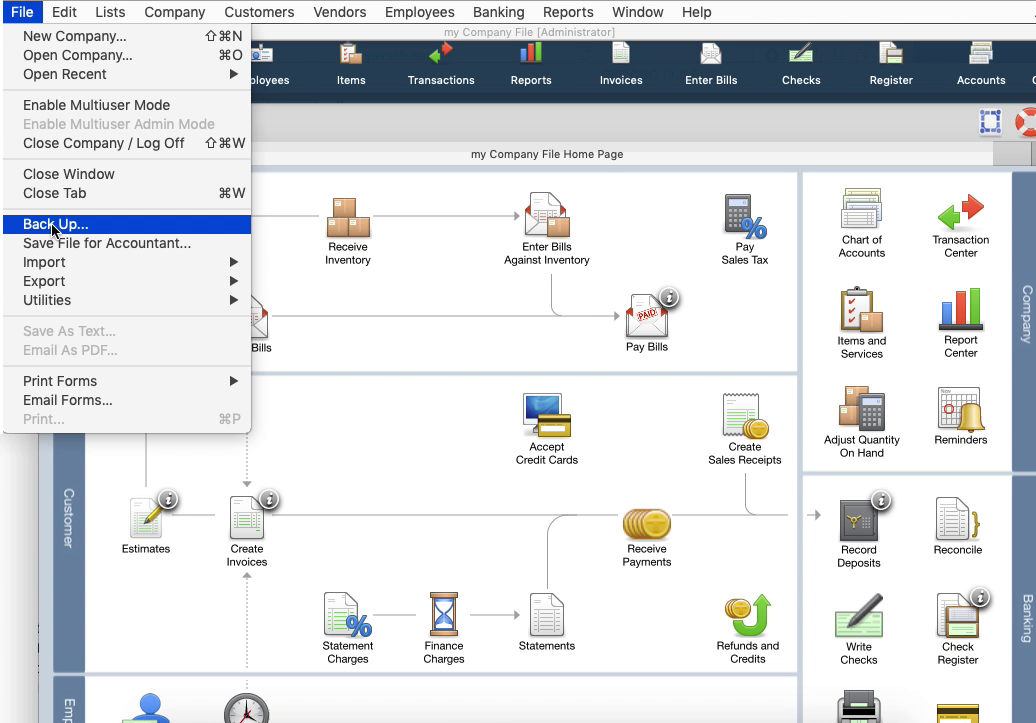
Make sure that the account you need to import into doesn’t have a blue ball icon. Click 'Lists' - 'Charts of Accounts'.
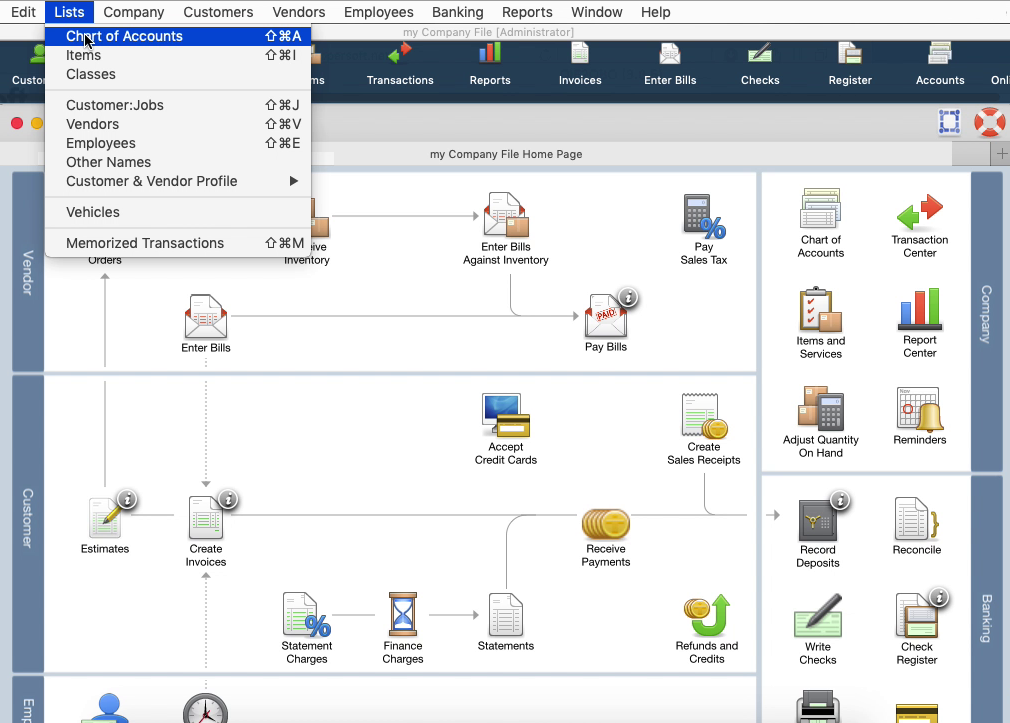
If it has a blue ball icon it means the account is online linked to direct download. You need to disconnect first to import a QBO file.
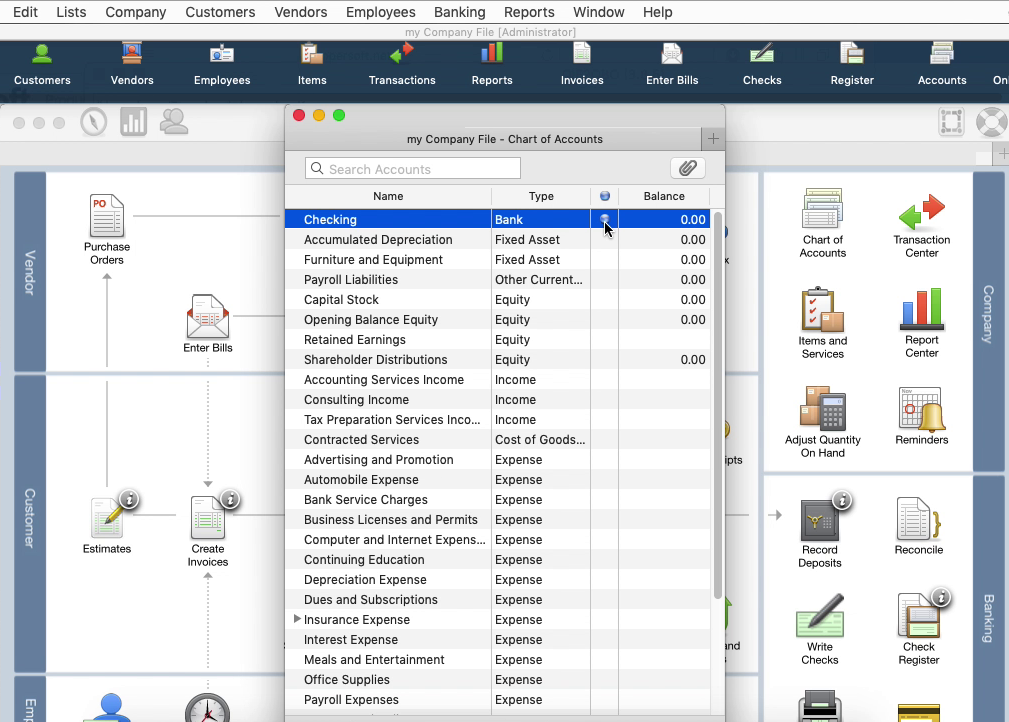
To disconnect, right-click - 'Edit Account'.
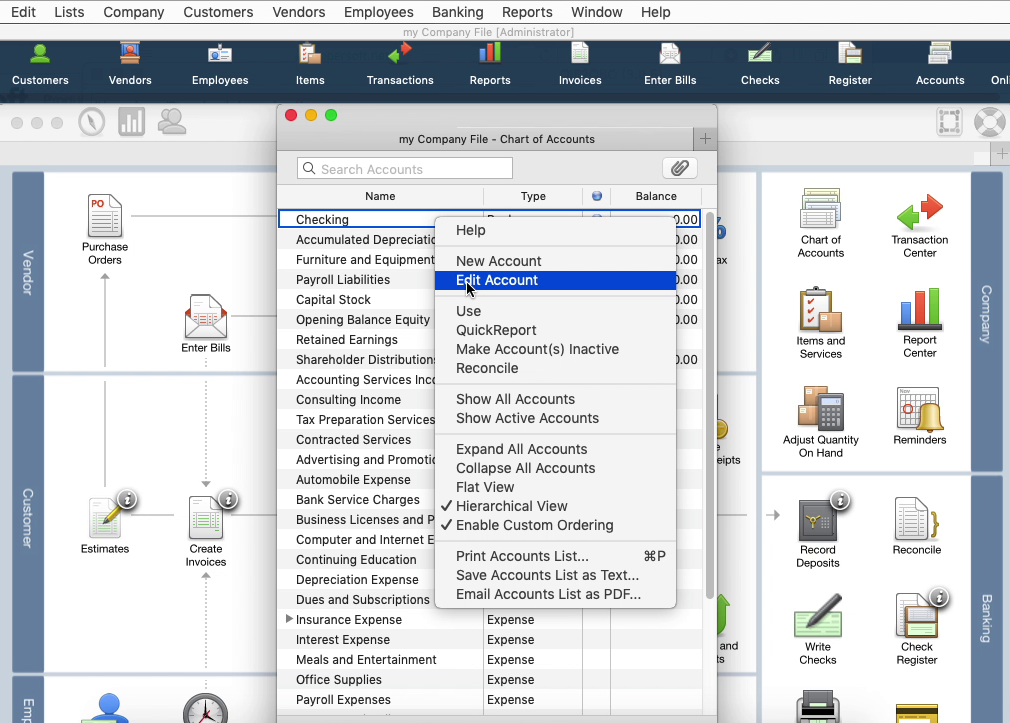
Then click 'Online Settings' and select 'Not enabled' and click 'Save'.
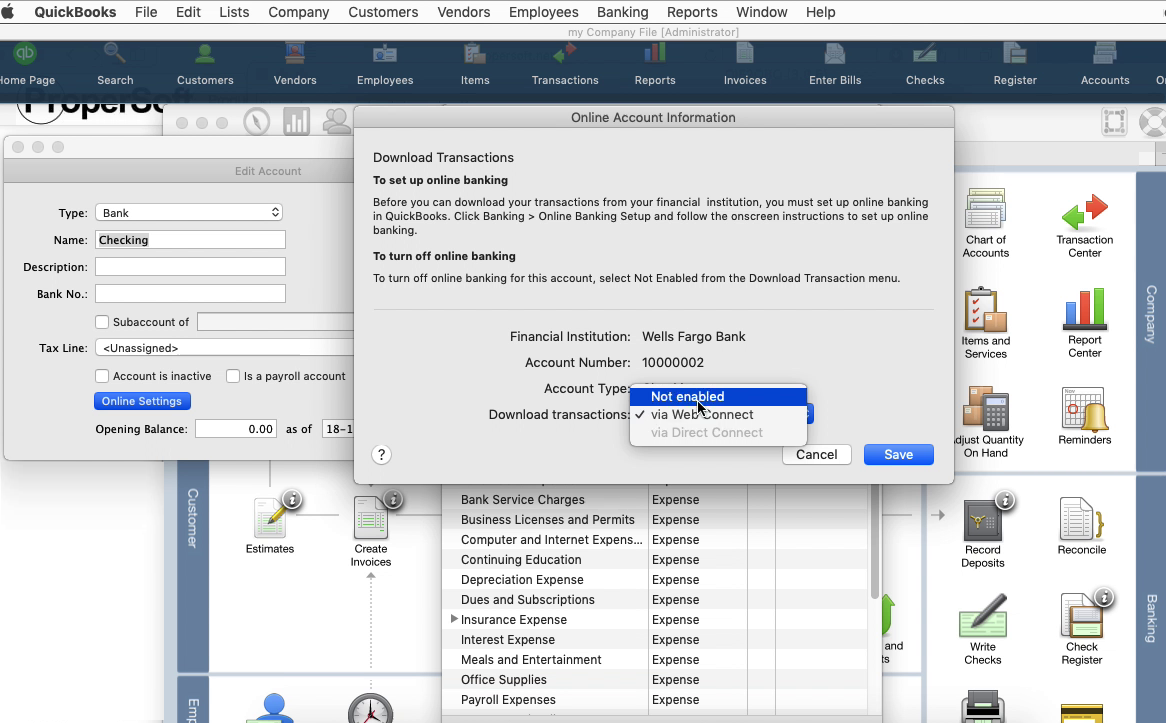
Then click 'Ok'. Check there is no blue ball after the change.

To import a QBO file, select 'File' - 'Import' - 'From Web Connect', select created QBO file.

And select an existing account to import transactions. It shows the Account ID, Account Type, that you set in QIF2QBO and it offers you to choose the existing account. Click the 'Continue' button.
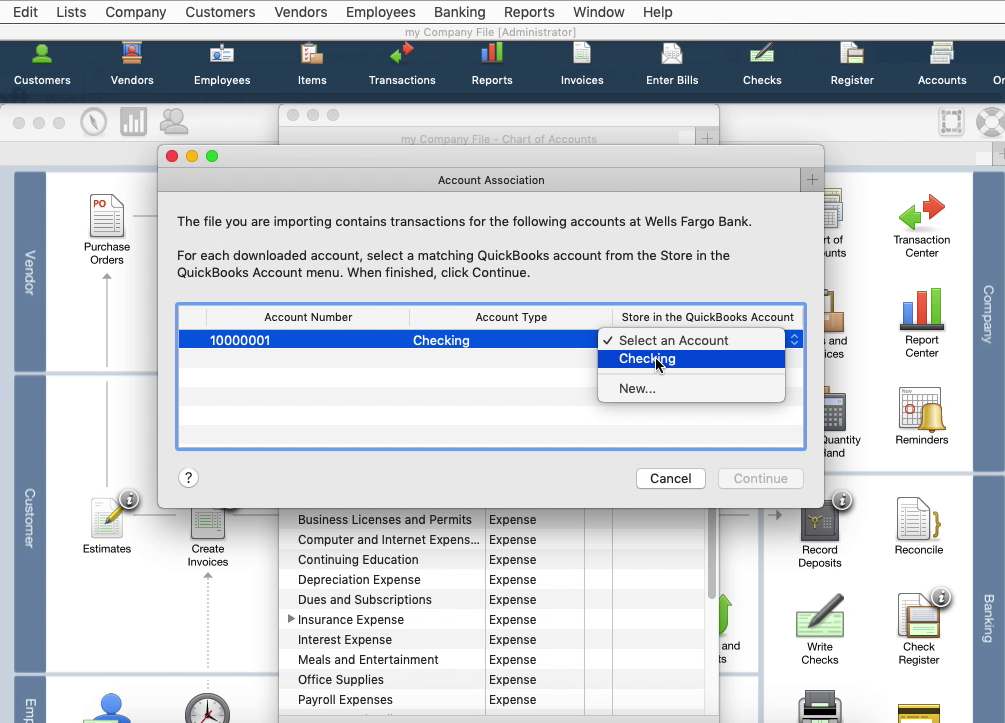
Now your data is imported.

'Downloaded Payee' column shows Payee names from the QBO file. Assign Vendor Records and expense/income accounts before adding transactions to the register.
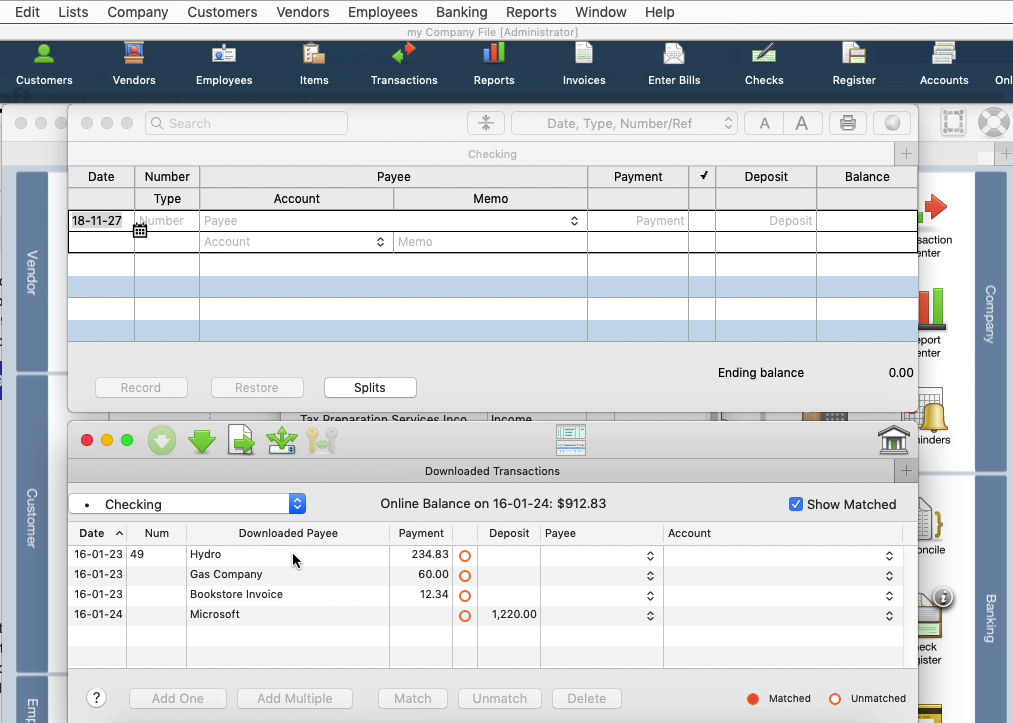
And the 'Payee' column is empty. It shows Vendor Records. When you choose a Vendor Record, for the Payee from the QBO file, QuickBooks will remember your choice for the next QBO import. Once Vendor Records and Account are set, you can add transactions to the register. The rename rule creation dialog will show up after to use for the next time.
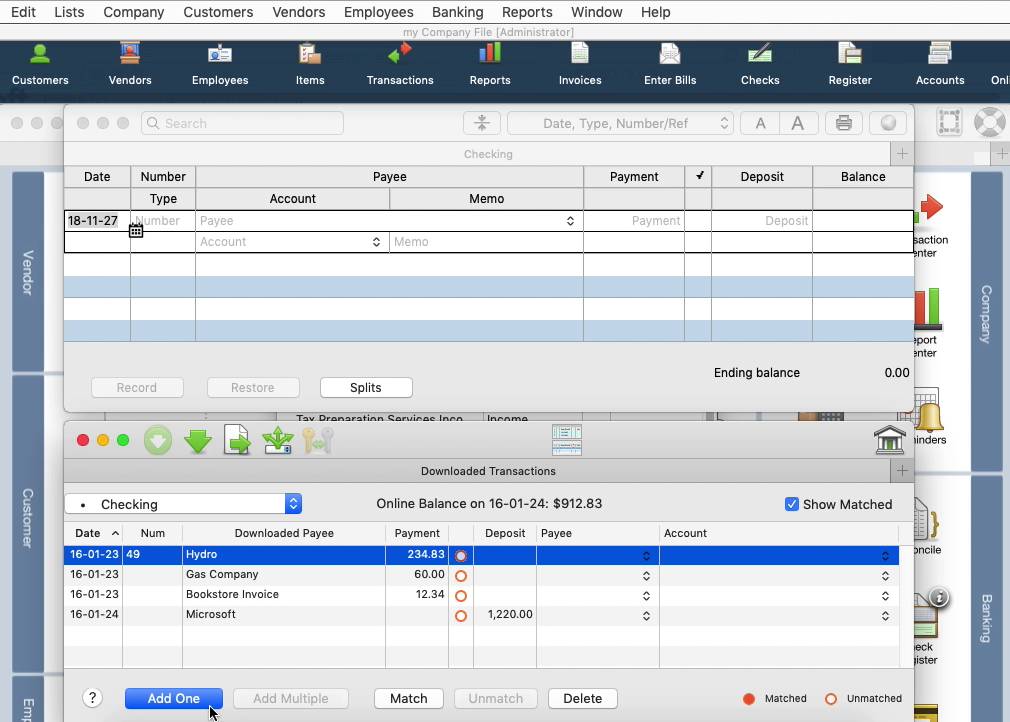
See this macOS tutorial as a video:
Related articles
- Bank2CSV: Convert transaction files to CSV/Excel
- Transactions: Make your transaction files importable into your accounting software
- Convert OFX to CSV/Excel
- How to Use CSV2QFX
- Make CSV/XLS/XLSX ready to import into QB Online/Xero/Quicken for macOS
- Convert CSV/Excel, PDF, QFX/OFX/QBO, QIF, MT940 to QFX and import into Quicken
- Convert CSV/Excel, PDF, QFX/OFX/QBO, QIF, MT940 to IIF and import into QuickBooks